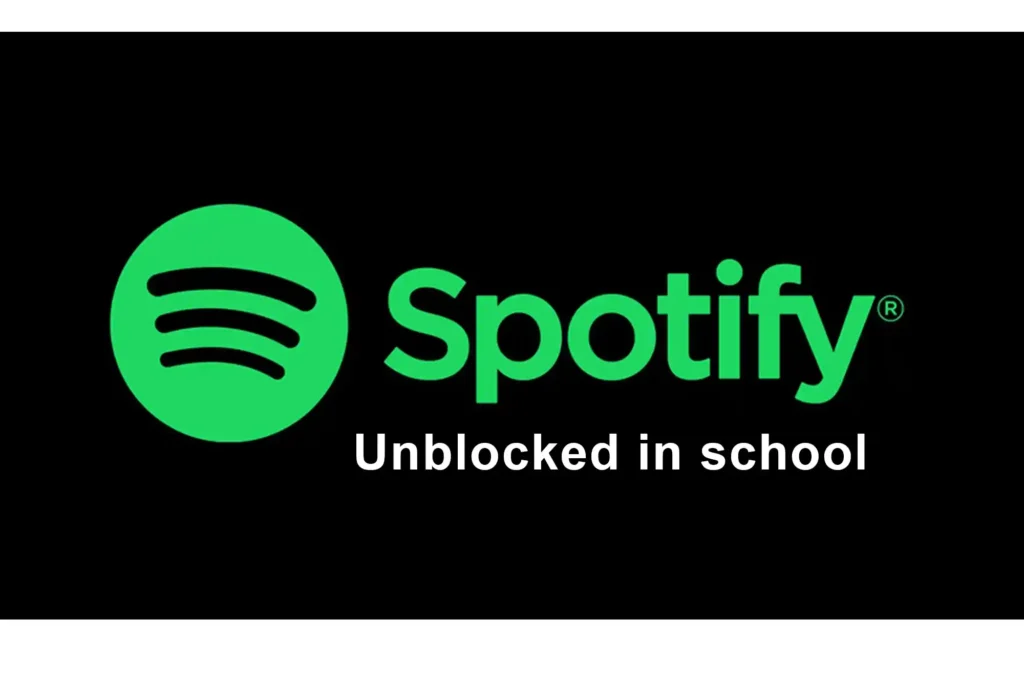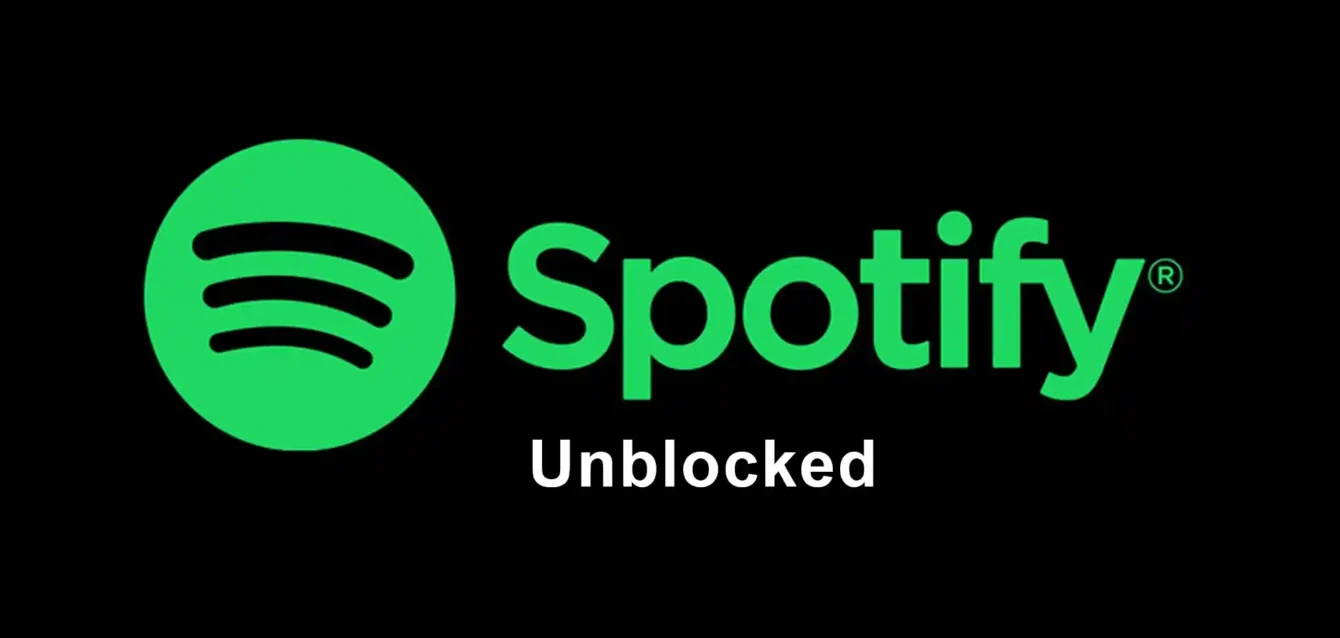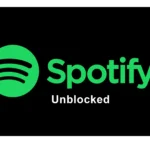Spotify Unblocked
If you’ve ever tried to stream your favorite playlist during study time or your lunch break only to find Spotify blocked, you’re not alone. Millions of students and employees worldwide face this frustrating situation daily. But before searching for ways to bypass these restrictions, it’s worth understanding why they exist and what legitimate options you have.
This guide explores the educational and practical aspects of Spotify access restrictions, helping you navigate network policies responsibly while respecting institutional rules and copyright laws.
Why Is Spotify Blocked at Schools and Workplaces?
Understanding the reasoning behind Spotify restrictions helps contextualize why these policies exist. Network administrators don’t block services arbitrarily. Several legitimate concerns drive these decisions.
Bandwidth Management and Network Performance
Streaming services consume substantial network resources. A single Spotify stream uses approximately 96 kbps for normal quality, 160 kbps for high quality, and up to 320 kbps for premium quality. When dozens or hundreds of users simultaneously stream music, the cumulative bandwidth demand can overwhelm institutional networks.
Schools and workplaces typically share internet connections across hundreds of devices. Research papers, video conferences, cloud applications, and learning management systems all compete for the same bandwidth. A 2023 study by Network World found that streaming media can consume up to 70% of available bandwidth during peak hours in educational settings.
By restricting entertainment streaming services, network administrators ensure that educational and work-critical applications function reliably. Students can submit assignments without timeouts, teachers can conduct virtual classes smoothly, and employees can participate in video conferences without disruptions.
Focus and Productivity Concerns
Educational institutions prioritize creating environments conducive to learning. Research published in the Journal of Educational Psychology demonstrates mixed results regarding music’s impact on academic performance. While some students benefit from background music during certain tasks, others experience significant distraction.
Schools implement content filtering systems not to punish students but to minimize potential distractions during instructional time. The Children’s Internet Protection Act (CIPA) in the United States requires schools receiving federal funding to implement internet safety policies, including content filtering.
Similarly, workplaces establish network usage policies to maintain professional productivity standards. While many employers recognize that occasional music listening can boost morale and focus, unrestricted streaming access may conflict with productivity expectations during work hours.
Copyright and Licensing Compliance
Spotify operates under complex licensing agreements with record labels, artists, and copyright holders. These agreements vary significantly by country and region. Content available in the United States might be restricted in Europe, Asia, or other territories due to licensing limitations.
Educational institutions and businesses must comply with copyright laws. While Spotify handles licensing for individual users, organizations sometimes face additional considerations when employees or students access streaming services on institutional networks using institutional equipment.
Schools particularly exercise caution regarding copyright compliance to avoid potential legal exposure. The Digital Millennium Copyright Act (DMCA) and similar international laws create responsibilities for institutions regarding copyrighted content accessed through their networks.
Network Security Considerations
Institutional networks face constant security threats. IT departments implement protective measures including firewalls, content filters, and application whitelists. These security systems sometimes categorize entertainment streaming services as potential security risks.
Free WiFi networks at schools and workplaces are particularly vulnerable to various attacks. Administrators limit the types of applications that can operate on these networks to reduce potential attack surfaces. While Spotify itself maintains strong security, the decision to block it often relates to broader network security policies rather than concerns about the specific application.
Age-Appropriate Content Concerns
While Spotify offers content filtering options and a dedicated Spotify Kids service, the standard platform contains music with explicit lyrics and mature themes. Elementary and middle schools particularly exercise caution about providing unrestricted access to content that may not be age-appropriate for younger students.
The platform’s collaborative playlist features and social components also introduce concerns about student interactions that may fall outside school supervision. Content filtering systems help schools maintain safe, controlled digital environments aligned with their educational missions.
Geographic Restrictions and Licensing Limitations
Spotify operates in over 170 countries, but availability varies based on licensing agreements between Spotify and rights holders in each jurisdiction. Music labels and artists determine which territories can access their content, creating regional variations in available catalogs.
Understanding Geo-Restrictions
Regional licensing exists because copyright laws are territorial. A recording released by a label in the United States has different copyright protections in France, Japan, or Brazil. Rights holders negotiate separate licensing deals for each market.
These restrictions serve legitimate purposes:
Artist Compensation: Regional licensing ensures artists and labels receive appropriate compensation based on local market conditions and streaming rates.
Staggered Releases: Artists sometimes release music in different markets at different times as part of marketing strategies.
Local Distribution Rights: Some music has exclusive distribution agreements with local services in specific countries.
Cultural and Legal Considerations: Content restricted in certain regions may violate local laws, cultural norms, or regulatory requirements.
When you travel internationally, Spotify’s terms of service permit 14 days of access in most countries before restricting your account to reflect your home country. This policy prevents abuse while accommodating legitimate travel.
Countries Where Spotify Access Is Limited
Spotify isn’t available in all countries. As of 2025, the service has limited or no availability in several regions including:
- China (due to government internet policies)
- Crimea (due to international sanctions)
- Sudan (due to sanctions and licensing challenges)
- Syria (similar restrictions)
- North Korea (no international streaming services permitted)
Additionally, some countries where Spotify operates may have limited music catalogs compared to markets like the United States or United Kingdom due to licensing variations.
Legitimate Ways to Access Spotify When Facing Restrictions

If you’re encountering Spotify restrictions, several appropriate approaches exist depending on your specific situation. The key is respecting institutional policies while finding solutions that work within established guidelines.
Use Spotify Web Player
Many network restrictions target the Spotify desktop application rather than the web-based player. The web player (open.spotify.com) functions entirely through your browser without requiring software installation.
This approach works particularly well in school or work environments where:
- Software installation requires administrator privileges
- The desktop application is specifically blocked
- Browser-based access remains permitted under usage policies
The web player offers nearly identical functionality to the desktop app, including playlist management, discovery features, and high-quality streaming. The main limitation is that offline listening isn’t available through the web interface.
When to use this method: If your institution blocks the application but not the website, the web player represents a perfectly legitimate access method that doesn’t violate any policies.
Switch to Mobile Data or Personal Hotspot
Institutional network restrictions apply only to WiFi or ethernet connections provided by that institution. Your personal mobile data plan operates completely independently.
If Spotify access is important during school or work hours, using your smartphone’s data connection bypasses institutional restrictions entirely. For laptop or computer use, enable your phone’s personal hotspot feature to create a private wireless network.
Practical considerations:
Data Usage: Spotify streaming consumes roughly 40-70 MB per hour at normal quality. Monitor your data plan limits to avoid overage charges.
Battery Life: Hotspot functionality drains smartphone batteries quickly. Keep a charger accessible.
Coverage Quality: Ensure reliable cellular coverage in your location for consistent streaming quality.
Workplace Policies: Some employers permit personal device usage during breaks but restrict it during work hours. Verify policies before proceeding.
When to use this method: During lunch breaks, free periods, or outside official work/class hours when using personal data doesn’t violate institutional policies.
Request Temporary Access for Legitimate Purposes
Network administrators can grant temporary exceptions to blocking policies when users demonstrate legitimate educational or professional needs. This approach requires:
Clear Justification: Explain specifically why you need Spotify access. Legitimate reasons might include:
- Music therapy or mental health benefits
- Research projects analyzing streaming technology
- Presentations requiring demonstration of music platforms
- Productivity enhancement through background music (if supported by productivity data)
Written Request: Formal requests receive more serious consideration than casual verbal inquiries. Include:
- Specific timeframe needed
- Particular use case or project
- How this supports educational or work objectives
- Willingness to comply with monitoring or restrictions
Supervisor/Teacher Support: Faculty or management endorsement significantly strengthens your case.
Many institutions maintain procedures for requesting exceptions to standard policies. IT departments evaluate these on a case-by-case basis, often granting temporary access when valid educational or professional justification exists.
Use Spotify Premium’s Offline Mode
Spotify Premium subscribers can download music for offline listening. This feature allows you to enjoy your playlists without any network connection, completely bypassing institutional network restrictions.
How offline mode works:
- Using a network without restrictions (home WiFi or mobile data), open Spotify and navigate to playlists, albums, or podcasts you want
- Toggle the “Download” switch to save content locally to your device
- Repeat for all content you want available offline
- At school or work, enable offline mode in Spotify settings
- Listen to downloaded content without network access
Advantages of this approach:
- Completely legal and within Spotify’s terms of service
- No bandwidth consumption on institutional networks
- Works regardless of any network restrictions
- Better battery life than streaming
- No audio interruptions from network issues
Limitations to consider:
- Requires Spotify Premium subscription ($10.99/month for individuals as of 2025)
- Downloaded content requires periodic online verification (typically every 30 days)
- Device storage space needed for music files
- Can’t discover new music or access recommendations while offline
Understand and Respect Institutional Policies
The most important approach is understanding why restrictions exist and respecting the policies established by your institution. Schools and workplaces implement these measures for valid reasons related to network performance, legal compliance, productivity, and safety.
Educational institutions create policies designed to optimize learning environments. Even if you disagree with specific restrictions, these policies reflect considered decisions by administrators balancing multiple priorities.
Workplaces establish network usage policies as part of employment terms. Violating these policies can have professional consequences ranging from warnings to termination, depending on severity and company culture.
Legal implications exist when circumventing institutional network restrictions. The Computer Fraud and Abuse Act in the United States and similar laws internationally may apply to unauthorized access attempts.
What About VPNs, Proxies, and Other Workarounds?
Many online articles suggest using Virtual Private Networks (VPNs) or proxy servers to bypass Spotify restrictions. While these technologies have legitimate purposes, using them to circumvent institutional policies raises significant concerns.
The Reality About VPNs in Schools and Workplaces
VPNs encrypt internet traffic and route it through external servers, making it appear to originate from different locations. This technology serves legitimate purposes including:
- Securing connections on public WiFi
- Protecting privacy from ISP monitoring
- Accessing services while traveling internationally
- Connecting to corporate networks remotely
However, using VPNs specifically to bypass institutional network restrictions typically violates usage policies. Most schools and workplaces explicitly prohibit VPN usage on their networks except for specifically authorized purposes.
Potential consequences of unauthorized VPN use:
Educational Settings:
- Violation of acceptable use policies
- Suspension of network privileges
- Academic disciplinary action
- Potential suspension from school in severe cases
Professional Environments:
- Written warnings or formal reprimands
- Loss of network access privileges
- Termination of employment in serious cases
- Potential legal action if company data is compromised
Technical limitations: Many institutional networks now detect and block VPN traffic using deep packet inspection. IT departments can identify VPN connections and take action against users attempting to circumvent restrictions.
Proxy Servers and Similar Tools
Proxy servers function similarly to VPNs, routing traffic through intermediary servers to obscure the original source. The same policy and ethical concerns apply.
Additionally, free proxy services often present security risks:
- Data harvesting and selling of browsing information
- Injection of advertising into web traffic
- Potential malware distribution
- Unreliable performance and frequent outages
- Credential theft from users
Using unauthorized proxy services on institutional networks can expose both personal and institutional data to security risks, creating liability beyond simple policy violations.
DNS Changes and Technical Workarounds
Some guides recommend changing DNS (Domain Name System) settings to bypass content filters. While technically feasible, this approach:
- Violates network usage policies in most institutions
- Can be detected by network monitoring systems
- May trigger security alerts
- Demonstrates intentional circumvention attempts
IT administrators view DNS manipulation as a serious policy violation because it bypasses security controls designed to protect the entire network.
Alternative Music Streaming Options During Restricted Access
When Spotify access isn’t available and you prefer not to use personal mobile data, several alternatives exist that may comply with institutional policies while providing music access.
YouTube Music
YouTube’s integration into educational settings means that YouTube Music sometimes remains accessible when other streaming services are blocked. Many schools allow YouTube access for educational purposes, and the music service operates through the same platform.
Considerations: Schools may block YouTube entirely or restrict it to specific approved channels. Check your institution’s policy regarding YouTube access.
Radio Streaming Services
Traditional radio stations offering online streaming may face fewer restrictions than on-demand services like Spotify. Services like TuneIn Radio or individual station websites stream live content similar to traditional radio.
These services consume less bandwidth than on-demand streaming and often avoid the same content filtering that blocks dedicated music platforms.
Institutional Music Resources
Many schools and universities provide access to music resources through library databases and educational platforms:
Naxos Music Library: Classical music streaming specifically licensed for educational institutions Alexander Street Music Online: Academic music database with various genres JSTOR: Academic database including music recordings and analysis
These resources support legitimate educational uses while complying with institutional policies and licensing requirements.
Offline Music Players
Transferring music you legally own to your device for playback through standard media players avoids streaming entirely. Options include:
- Music purchased from iTunes, Amazon, or other services
- CDs ripped to digital formats (for personal use)
- Royalty-free music from sources like Creative Commons
This approach works entirely offline, consuming no institutional bandwidth and avoiding any policy concerns.
Understanding Spotify’s Terms of Service
Respecting Spotify’s own terms of service remains important regardless of your access method. The company’s user agreement includes several relevant provisions:
Geographic Access Terms
Spotify’s terms explicitly state that users should access the service from their country of residence. Using VPNs or similar technologies to circumvent geographic restrictions violates these terms.
While Spotify provides 14 days of access when traveling, using technical means to permanently access content restricted in your region breaches the service agreement. Spotify can suspend or terminate accounts that repeatedly violate geographic access terms.
Account Sharing Restrictions
Spotify prohibits sharing account credentials with multiple users. Family plans exist for household use, but sharing individual accounts among friends to split costs violates terms of service.
Premium features including offline downloads are intended for the account holder’s personal devices only.
Commercial Use Limitations
Standard Spotify subscriptions are for personal, non-commercial use only. Playing Spotify in commercial establishments, at public events, or in other commercial contexts requires different licensing arrangements.
Educational institutions sometimes face questions about classroom use of streaming services. Generally, playing music for a class falls into educational fair use, but ambiguities exist regarding copyright implications.
The Legal and Ethical Perspective
Beyond practical considerations, understanding the legal and ethical dimensions of accessing blocked services helps inform responsible decision-making.
Computer Fraud and Abuse Act Implications
In the United States, the Computer Fraud and Abuse Act (CFAA) criminalizes unauthorized access to computer systems. While primarily targeting serious hacking offenses, the law’s broad language creates potential applicability to circumventing institutional network security measures.
Courts have interpreted “exceeding authorized access” in various ways. Some interpretations could include using technical methods to bypass institutional filtering systems, though prosecution for accessing entertainment services remains unlikely.
The legal risk is minimal for ordinary users, but the possibility exists, particularly if access attempts cause network problems or coincide with other policy violations.
International Considerations
Similar laws exist globally:
- UK Computer Misuse Act
- EU General Data Protection Regulation (GDPR) compliance requirements
- Country-specific cybersecurity and data protection laws
These laws primarily target malicious actors, but they establish legal frameworks that can apply to unauthorized access attempts.
Ethical Considerations for Students and Professionals
Beyond legal requirements, ethical considerations matter:
Respect for Resources: Institutional networks represent significant investments. Respecting usage policies shows appreciation for provided resources.
Community Impact: Your actions affect others sharing network resources. Bandwidth consumption from circumventing restrictions degrades service quality for the entire community.
Integrity and Professionalism: How you respond to restrictions reflects personal integrity. Employers and educators value people who work within established systems rather than looking for workarounds.
Learning Opportunity: Accepting restrictions teaches important life skills about working within boundaries and systems you may not control.
Educating Younger Users About Digital Responsibility
For parents and educators, Spotify restrictions create opportunities to discuss digital citizenship and responsible technology use.
Teaching Moments About Network Policies
When young people encounter blocked services, productive conversations can explore:
Why rules exist: Help children understand that restrictions aren’t arbitrary but reflect thoughtful consideration of multiple factors.
Balancing rights and responsibilities: Discuss how institutional policies balance individual preferences with community needs.
Critical thinking about technology: Encourage questions about why certain technologies are permitted while others are restricted.
Appropriate problem-solving: Model requesting exceptions through proper channels rather than seeking technical workarounds.
Age-Appropriate Content Discussion
Spotify blocking creates opportunities to discuss appropriate content consumption:
Parental Controls: Explore Spotify’s parental control features and explicit content filters for home use.
Music Literacy: Discuss how lyrics and themes in music affect emotions and perspectives.
Balance: Address balancing music entertainment with other activities including reading, exercise, and face-to-face social interaction.
Time Management: Help children understand how entertainment consumption fits into daily schedules without displacing important responsibilities.
Resources for Parents
Several tools help parents manage children’s music access appropriately:
Spotify Kids: Dedicated application with curated content appropriate for children under 12, featuring music, stories, and educational content without explicit material.
Parental Control Apps: Third-party applications like FlashGet Kids, Qustodio, or Norton Family provide comprehensive oversight of children’s device usage including music streaming.
Device Screen Time Features: iOS Screen Time and Android Digital Wellbeing include app-specific time limits and content restrictions.
Family Plans: Spotify Family Premium ($16.99/month for up to six accounts) allows individual profiles with varying content filters while maintaining parental oversight.
Practical Tips for Music Lovers in Restricted Environments
If you’re passionate about music but face access restrictions, several strategies help you stay connected to your favorite artists while respecting policies.
Build Your Offline Library
Invest time in curating comprehensive offline playlists using Spotify Premium’s download feature. During unrestricted access times (evenings, weekends, home WiFi), download:
- Your most-played playlists
- New releases from favorite artists
- Discovery Weekly suggestions for variety
- Podcasts or audiobooks for alternative entertainment
Regularly refresh downloaded content to keep your library current. Spotify automatically updates downloaded playlists when you connect to unrestricted networks.
Explore Music During Appropriate Times
Rather than struggling against restrictions during class or work hours, dedicate specific times to music discovery and listening:
- Commute time using personal mobile data
- Lunch breaks with personal devices
- Before and after school/work hours
- Weekends and holidays
This approach respects institutional boundaries while maintaining your connection to music.
Communicate With Decision-Makers
If Spotify access would genuinely support your educational or professional activities, make your case to appropriate authorities:
For Students: Discuss with teachers or administrators how music supports your learning style. Research on music and productivity can strengthen arguments for limited access during appropriate times.
For Employees: Propose a pilot program allowing music streaming during specific hours or for specific roles. Productivity data showing benefits may persuade management to reconsider blanket restrictions.
Collective Action: Work with others facing similar restrictions to propose reasonable policy modifications that address both user needs and institutional concerns.
Accept Some Limitations Gracefully
Not every restriction requires a workaround or challenge. Sometimes accepting limitations demonstrates maturity and professionalism:
- Learning to focus without background music builds concentration skills
- Experiencing natural environmental sounds maintains awareness of your surroundings
- Engaging with colleagues or classmates during break times builds relationships
- Developing appreciation for silence and reflection offers mental health benefits
Looking Forward: The Future of Streaming Access in Institutions
Institutional policies regarding streaming services continue evolving as technology, pedagogical understanding, and workplace cultures shift.
Emerging Trends in Educational Technology
Forward-thinking schools increasingly recognize that restricting all entertainment technology may not represent optimal educational policy. Progressive approaches include:
Scheduled Access Windows: Permitting streaming during lunch, breaks, and free periods while maintaining restrictions during instruction time.
Tiered Systems: Providing increased access privileges for older students demonstrating responsibility and academic performance.
Educational Streaming Partnerships: Some institutions negotiate educational licensing agreements directly with streaming platforms, providing controlled access for students.
Focus on Digital Citizenship: Shifting from total restriction to teaching responsible use, helping students develop self-regulation skills.
Workplace Evolution
Modern workplaces similarly reevaluate entertainment streaming policies:
Results-Oriented Environments: Companies focusing on output rather than activity increasingly permit personal music streaming if productivity remains high.
Employee Wellness Initiatives: Recognition that music listening reduces stress and improves morale leads some organizations to embrace rather than restrict streaming services.
Flexible Bandwidth Management: Advanced network management allows real-time bandwidth allocation, preventing streaming from impacting critical business applications without requiring total blocks.
Bring Your Own Device (BYOD) Policies: Permitting personal devices with personal data connections provides employees freedom while maintaining corporate network control.
Technical Solutions in Development
Technology advancement may eventually reduce tensions between user preferences and institutional concerns:
Improved Compression: More efficient streaming codecs reduce bandwidth requirements, making streaming less impactful on shared networks.
Edge Caching: Content delivery networks can cache popular streaming content locally, reducing repeated downloads of the same songs.
Quality-of-Service (QoS) Management: Sophisticated network management automatically prioritizes essential traffic while allowing entertainment services to use available excess bandwidth.
AI-Powered Content Filters: More nuanced filtering systems may enable age-appropriate or context-appropriate access rather than complete blocking.
Conclusion: Navigating Restrictions Responsibly
Encountering Spotify blocks at school or work creates frustration, but understanding the reasoning behind these restrictions promotes more productive responses than simply seeking workarounds.
Network administrators implement blocking policies for legitimate reasons including bandwidth management, productivity optimization, legal compliance, and security protection. These decisions reflect thoughtful consideration of community needs rather than arbitrary restrictions.
Multiple legitimate approaches exist for accessing music while respecting institutional policies. Using the web player, switching to personal mobile data, downloading content for offline use through Spotify Premium, or requesting appropriate exceptions all provide paths forward within established rules.
Technical circumvention methods like VPNs or proxy servers typically violate usage policies and may carry consequences ranging from network access suspension to academic or professional discipline. The temporary convenience rarely justifies the potential risks.
Most importantly, restrictions provide opportunities to develop crucial life skills including working within established systems, respecting community resources, and finding creative solutions to limitations. These capabilities serve you far beyond any particular instance of blocked entertainment access.
Whether you’re a student navigating school networks, an employee facing workplace restrictions, or a parent helping children understand digital boundaries, approaching the situation with awareness, respect, and creativity leads to better outcomes than frustration or attempts to circumvent legitimate policies.
Music enriches our lives profoundly, but accessing it responsibly within societal structures demonstrates maturity and integrity that ultimately matters more than whether you can stream your favorite playlist during math class or your morning commute.
Frequently Asked Questions
Is it illegal to use a VPN to access Spotify at school?
Using VPNs to circumvent school network restrictions typically violates acceptable use policies rather than criminal law. However, consequences can include suspension of network privileges, academic discipline, or in extreme cases, violations of computer fraud statutes. Check your institution’s specific policies and understand potential consequences before proceeding.
Why can’t I access certain songs on Spotify even when the service works?
Geographic licensing restrictions limit song availability by region. Record labels and artists determine which countries can stream their content based on distribution rights and licensing agreements. Using technical workarounds to access geo-restricted content violates Spotify’s terms of service.
Will Spotify ban my account if I use a VPN?
Spotify can suspend or terminate accounts that repeatedly violate terms of service, including using VPNs to circumvent geographic restrictions. While enforcement varies, repeated violations risk permanent account loss.
Can I download Spotify songs to avoid school restrictions?
Spotify Premium subscribers can legally download music for offline listening. This respects institutional policies by not consuming network bandwidth and works on any device regardless of network restrictions. Downloads require periodic online verification approximately monthly.
Are there legal consequences for bypassing school internet filters?
While unlikely for accessing entertainment services, the Computer Fraud and Abuse Act and similar laws technically apply to unauthorized access attempts. More practically, violating school technology policies can result in disciplinary action, suspension of technology privileges, or academic consequences.
How can I convince my school to unblock Spotify?
Present a formal written request to administration explaining legitimate educational purposes for access, propose limited access during non-instructional times, gather research on music’s benefits for learning and focus, and suggest pilot programs with monitoring to demonstrate responsible use.
What’s the difference between Spotify Web Player and the app?
The web player functions entirely through your browser without software installation, making it accessible when the desktop application is blocked. Functionality is nearly identical except offline listening isn’t available through the web interface.
Can teachers use Spotify in classrooms legally?
Educational fair use generally permits playing music for instruction, but ambiguities exist regarding streaming services. Some institutions maintain educational Spotify accounts, while others restrict use entirely. Consult your school’s specific policies regarding classroom technology use.
Does using mobile data to access Spotify violate school policy?
Personal mobile data operates independently from school networks. Using your phone’s data connection during breaks or free periods typically doesn’t violate policies, though schools may restrict personal device use during instructional time. Verify your institution’s specific mobile device policies.
Are there family-friendly Spotify alternatives for schools?
Spotify Kids provides curated, age-appropriate content for children. Additionally, educational music databases like Naxos Music Library or Alexander Street Music Online offer institution-licensed alternatives specifically designed for educational settings.
Why do some countries completely block Spotify?
Government internet policies in countries like China, licensing and sanctions issues in places like Sudan and Syria, and geopolitical factors create complete service blocks in certain regions. These restrictions relate to broader internet governance rather than Spotify-specific concerns.
Can I share my Spotify Premium account to help friends access music at school?
Account sharing violates Spotify’s terms of service. Family plans exist for household use, but sharing credentials among friends risks account termination. Each user should maintain their own account or join an authorized family plan.





